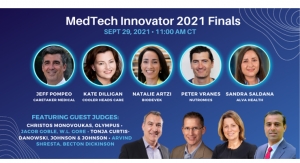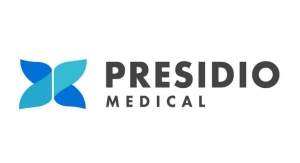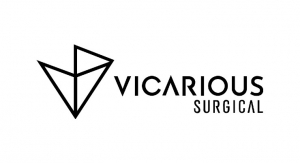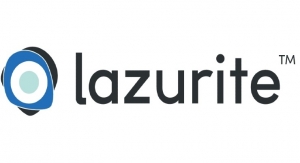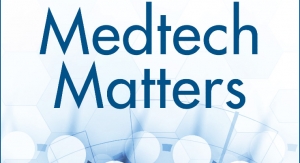Finding the Right Formula
Singapore’s public-private partnership synergies help eliminate hidden outsourcing costs.
Susan Mucha, Powell-Mucha Consulting, Inc.
Medical device manufacturers are no longer strangers to the same margin pressures faced by consumer product manufacturers. Despite current economic realities leveling the playing field, important differences remain. Medical products require higher levels of quality and can carry substantially more liability risk than consumer products. Additionally, the regulatory environment limits redesign and component substitution options. Consequently, in many projects, cost cutting needs to be achieved through improved efficiency rather than simply migrating to the newest emerging low-cost labor market, radically redesigning the product or switching to lower-cost components.
|
|
So, how does Singapore help medical device manufacturers reduce costs without compromising on quality?
Six key areas stand out:
• One-stop-shop solutions
• Supplier identification assistance
• Access to technology research and development funding and educational resources
• Access to suppliers with specialized skills
• Supplier commitment to continuous improvement teaming efforts
• Business-friendly environment
One-Stop-Shop Solutions
While some may view Singapore’s mature manufacturing environment as a labor cost driver, the reality is that the country’s maturity factor also has resulted in a larger pool of multinational suppliers able to support the entire product life cycle with quality systems and program management methodologies comparable in scope to those found in the United States or Europe. The skill level of the work force enables companies to staff more efficiently than their emerging labor market counterparts, while Singapore’s overall costs of doing business remain lower than the United States or Europe. And, in many cases, suppliers have multiple manufacturing sites, which allow them to channel labor-intensive work to lower-cost regions, while keeping processes which require more highly skilled personnel in Singapore. The end result for OEMs is a lower total cost driven by a supply base focused on operational efficiency, logistics simplicity and risk mitigation.
The region’s one-stop-shop solutions can be quite robust, and there are a number of examples. France-based medical device manufacturer SpineGuard, along with a product development firm and a Singapore-headquartered EMS company, was able to tap Singapore’s investment community to develop its PediGuard product. PediGuard is a disposable, wireless instrument used in spinal surgery. It is, according to the company, the first and only handheld device that can detect possible cortex perforation during pedicle preparation for screw placement, and can alert the surgeon prior to a breach by accurately analyzing the electrical conductivity of the surrounding tissues in real time. In November 2007, PediGuard won Singapore’s President’s Design of the Year Award in the product and Industrial Design category. EMS provider Beyonics Technology was selected to manage the overall manufacturing process, and it worked with a Singapore-based design firm, Xentiq, in the initial development effort under the supervision of SpineGuard. However, product development and manufacturing was only part of the solution delivered in Singapore. Bio*One Capital, a biomedical sciences-dedicated investment company and a subsidiary of Singapore’s Economic Development Board Investments, led an investor group that funded the establishment of a Singapore-based subsidiary by the manufacturer of PediGuard. This is an example of public-private partnership that supported a device manufacturer’s expansion into the Singapore medical market, along with access to a strong supply base capable of supporting very rigorous requirements for quality and technical solutions in both product development and volume manufacturing. Forefront Medical Technology Pte Ltd. also has a business model that facilitates one-stop shopping for full life cycle support. This global medical device manufacturer is both an original device manufacturer and a contract manufacturer. It has a technical sales team in North America to provide local development support. Its core business base is airway devices, but it also manufactures drug infusion products and is engaged in the development and investigation of devices for gastrointestinal and cardiac applications. Its clients aren’t simply looking for a product development or manufacturing solution. They also want a logistics solution that addresses issues such as sterilization, customs processing and end-market fulfillment. The company has strong supply chain management and program management functions to support this effort. Rayco Technologies Pte Ltd. is another firm that combines product development support and access to lower cost labor markets in its business model. The company is a precision elastomeric solutions specialist whose components are used in medical devices, as well as in a variety of other industries. One of Rayco’s key strengths is its ability to team with customers in product development. In some cases, the company is required to formulate a compound that not only meets customer specifications for quality, form, fit and function, but also biocompatibility standards. For example, on one project, the company proposed local competitive alternate elastomers that passed NSF standards and was approved by the customer. The alternate material suggestion saved the customer $100,000 per year, compared to the original material specified. In this model, a complete product development process includes design of experiment, concept development, prototyping, design for manufacturability (DFM) and management of third-party qualification testing, rather than simply prototyping and DFM assistance alone. Early involvement with the customer’s designers using failure effects analysis, in-house tool design and fabrication, and in-house material testing can result in as much as a 50 percent reduction in time to market. Additionally, recommendations on improved manufacturing processes such as changing from over-molding to an assembly process that reduces lead time have shortened manufacturing processes by as much as 25 percent. Rayco maintains its design and laboratory facilities in Singapore. While molding is done in China to tap a lower labor cost region, the interface through Singapore allows for English-speaking engineering and program management support as well as a business culture and technical support infrastructure similar to that found in the United States.
Supplier Identification Assistance
While it is relatively easy to find an electronics manufacturing services (EMS) provider or even a wide range of custom component suppliers for consumer applications, finding component or subassembly suppliers with ISO 13485 certification, the ability to work with high-mix, variable-demand projects or the ability to procure and work with specialized, medical-grade materials, can be a challenge in many lower-cost labor markets. The Singapore government offers strong support in this area. IE Singapore assists local suppliers in expanding to new markets by introducing them to multinational companies (MNCs) seeking new suppliers. IE Singapore’s supply base search and matchmaking services make sourcing hard-to-find commodities much less of a challenge. MNCs can submit their specifications for supplier capabilities to an IE Singapore representative, and the agency will develop a list of compatible suppliers. With offices in more than 30 cities worldwide including London, England, Frankfurt, Germany, New York, N.Y., and Los Angeles, Calif, IE Singapore officers will also set up meetings with the short-listed suppliers chosen by the MNC’s sourcing team, so the team can visit and/or audit the selected companies within a single visit. IE Singapore’s staff includes engineers, which helps ensure that the agency’s supplier recommendations are in line with the MNC’s specific technical capability requirements. In some cases, arranged visits may include side trips to satellite facilities in lower-cost labor markets such as Indonesia, Malaysia, Vietnam or China. The agency also organizes trade missions for Singapore suppliers to various countries to provide a localized first look to sourcing teams wishing to explore options prior to travelling to a supplier facility.
Finally, IE Singapore teams with other trade promotion agencies and associations to create focused supply base matchmaking events and conferences to allow MNCs to schedule trips that combine relevant educational opportunities with pre-arranged supplier tours. The next event of this nature is the Global-Asia Trade Exchange (GATE) 2010 Medical Technology, scheduled for March 18-19 at the Suntec Singapore International Convention & Exhibition Centre. This business-matching event seeks to initiate successful partnerships by short-listing the most suitable regional suppliers in the electronics and precision industries for medical technology buyers through a process of pre-qualification based on each MNC’s specific supply base identification specifications.
Such programs help lower costs of supplier identification and qualification on both the supplier and customer side of the equation. Niche suppliers minimize their marketing costs, while MNCs with complex needs can consolidate their regional audits and tours into one or two focused trips.
Access to Funding and Educational Resources
Another key driver of a lower-cost equation is government support of initiatives designed to provide regional supply base capability enhancement, as well as overall industry research and development objectives. Such initiatives encourage suppliers to more aggressively invest in new or enhanced capabilities by offsetting a large portion of the cost either through direct reimbursement, leveraged economies of scale via consortia or tax credits. Customers benefit from efficiencies generated by the enhanced capabilities, yet supply base overhead costs remain competitive as a result of the cost offsets. For example, the Singapore Institute of Manufacturing Technology (SIMTech), a research institute under Singapore’s Agency for Science, Technology and Research (A*STAR) launched the Medtech Manufacturing Consortium in October 2009. The 26-member consortium reinforces local industry capabilities and establishes medical technology research and development R&D platforms for technology and knowledge transfer by exploiting the results of R&D collaboration with the research institutes, value chain partners and MNCs.
Focused areas of R&D collaboration will include:
• Forming technology for precision forming of medical devices and medical equipment components of polymeric, metallic and ceramics materials for use in safety needles, lenses, polymer-based microfluidic chips for DNA analysis and medical diagnostic applications
• Surface finishing to anodise and polish surgical materials for good corrosion protection, bio-inertness, anti-sticking and durability• Carbon coatings surface finishing for implantable parts to increase biocompatibility and mechanical performance of metal parts used as implants
• Flexible and conformal technologies for wearable medical electronics and sensors
• Micro-laser welding to join dissimilar materials where heat sensitivity can be a problem
• Mass finishing of small medical components by abrasive flow machining where processing of complex internal passage is inaccessible by conventional methods.
Training also has been addressed. The Workforce Skills Qualifications Graduate Diploma in MedTech Manufacturing is a training program developed by the Singapore Workforce Development Agency in collaboration with SIMTech. This program aims to equip existing engineers and technical specialists with the requisite knowledge and skills in the latest medical device regulations and manufacturing technology to support the emerging medical technology manufacturing sector in Singapore, as well as to facilitate the entry of new talents into the industry.
While the consortium is relatively new, Singapore’s government agencies have long supported supply base capabilities and skills enhancement. For example, EMS provider CEI Contract Manufacturing Limited regularly taps government programs to enhance internal capabilities. The company’s variable-demand, high-mix focus and customer requirements for traceability drove a need for strong shop floor information technology support. Five years ago, it used A*STAR resources in searching, selecting and developing a shop floor optimization software engine for a proprietary manufacturing execution system (MES). Today, this proprietary MES is in plant-wide operation in incoming inspection, materials and kitting verification, and production scheduling and shipment traceability. It also provides quality alerts and documentation control, and runs in parallel with an Oracle MRP system.
The proprietary MES optimizes production scheduling, which improves machine utilization, minimizes work span and reduces waiting time between production operations. CEI worked with a local university to benchmark the system’s performance against other MES software algorithms. The study found that the proprietary MES provided a 10 to 20 percent improvement in shop floor productivity. In fact, the higher the production mix (number of jobs multiplied by the number of machine resources), the better the optimization results. In terms of actual customer benefits, this improved scheduling efficiency translates to faster throughput of higher mix product and increased flexibility in schedule changes.
In another case, First Engineering used Singapore’s Economic Development Board funding to enhance its plastics optics technology, which facilitated expansion into imaging systems and healthcare applications. The “big screen experience” in head-worn eyewear personal video viewers is achieved through molded plastic, free-form optical surfaces. The manufacturing process uses diamond turning technology to produce a diffractive surface on the free form optical prism, which is always a challenge in diffractive optical elements.Although popular in consumer products, this technology also has applications in low-cost, wearable augmented information displays and healthcare protective eyewear and diagnostic devices. First Engineering used EDB funding in adding a high-volume, high-cavity production line using cube mold technology. The line doubles the output of conventional multi-shot technologies by increasing the yield and reducing process cycle time. There also are improvements in energy consumption, equipment footprint size, degree of automation and range of production techniques.
Access to Suppliers with Specialized Skills
As is the case with many mature manufacturing markets, Singapore’s manufacturing sector has fine-tuned its business models to address the needs of industries with high service and technically complex project support needs. The result is companies teaming with customers to address niche requirements in a labor environment that is equally skilled, yet lower in cost than either Europe or the United States. One example is AMS Biomedical. AMS and its parent company, Manufacturing Integration Technology Ltd., have focused on low-volume, technically complex electronic and electromechanical equipment in the medical and semiconductor industries, respectively. Typically, the high-custom-component count and low volumes associated with these types of products do not fit well in traditional offshore EMS business models, keeping many of these projects in high-cost labor markets. Yet, the amount of labor content can drive significant cost savings in Singapore’s lower labor cost environment. AMS has developed a business model that supports this niche well. Design for manufacturability and design for assembly are key disciplines in its product development process. Precision machining, welding, casting and secondary processes such as surface treatments are part of its vertically integrated capabilities. The company also has a strong supply chain network. AMS equipment mainly is produced for the ophthalmology and urology segments of the medical industry.
Onn Wah Precision Engineering Pte Ltd. has developed a business model that employs Lean manufacturing philosophies to both address the challenges of scheduling in a high-mix, low-volume environment, and ensure high levels of quality for precision machined parts that are often mission critical. Onn Wah’s facilities combine 5S, Total Productive Maintenance and Lean manufacturing principles with a low-cost structure environment. This drives a number of customer benefits that help eliminate hidden cost. First, elimination of factory clutter and a visual management system enhance real-time traceability and focused data collection. A focus on set-up time reduction through minimizing variation enhances overall quality, flexibility and speedy response. Zero work-in-process focus, from information flow to production flow, is driving significant cycle-time reductions from order acceptance to order delivery. Finally, since mission-critical parts often have tight tolerances and are made of higher cost special alloys, reduction in scrap eliminates both the actual cost of material replacement to the supplier and the opportunity cost of missed deliveries to the customer.
Business-Friendly Environment
The other element that contributes to lower total cost is the ease of doing business. Singapore’s legal system is based on British Common Law and English is the official language of business. Intellectual property (IP) protection is very strong. This simplifies contract negotiations, patent filings and IP protection enforcement, and ensures timely, accurate communication with suppliers. Movements of materials and finished goods in and out of country, and payment transfers are governed by easy-to-understand regulations and efficient systems, which contribute to predictable costs and cycle times.
Singapore’s Key Strength:Elimination of Hidden Costs
Singapore’s growing biomedical sector is driven in part by its ability to continue to adapt to the changing and rigorous requirements of medical device manufacturers. Public-private partnerships are enhancing the ability of the regional supply base to increase capabilities at minimal cost. The resulting efficiencies help eliminate issues that routinely add hidden cost to complex, variable demand projects. An overall business-friendly environment helps both to mitigate the risks of manufacturing offshore and make costs of doing business easy to estimate. Finally, a strong government focus on trade promotion helps reduce supplier identification time and costs.
Today’s economically challenging, variable demand environment is driving significant supply base rationalization. The importance of weighing lowest total cost against unit price is not a new concept. The examples above illustrate a myriad of ways that suppliers in this region are addressing their customers’ needs for specialized solutions, risk migration and elimination of the inefficiencies that drive hidden costs.
Editor’s note: More information on GATE is available by contacting Ryan Ong with IE Singapore at ryan_ong@iesingapore.gov.sg.





